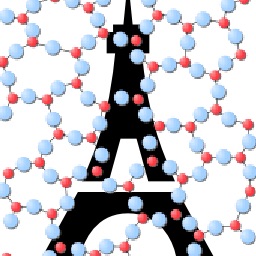Is cement a glassy material
The nature of Calcium–Silicate–Hydrate (C–S–H), the binding phase of cement, remains a controversial question. In particular, contrary to the former crystalline model, it was recently proposed that its nanoscale structure was actually amorphous. To elucidate this issue, we analyzed the structure of a realistic simulation of C–S–H, and compared the latter to crystalline tobermorite, a natural analogue to cement, and to an artificial ideal glass. Results clearly support that C–S–H is amorphous. However, its structure shows an intermediate degree of order, retaining some characteristics of the crystal while acquiring an overall glass-like disorder. Thanks to a detailed quantification of order and disorder, we show that its amorphous state mainly arises from its hydration.
